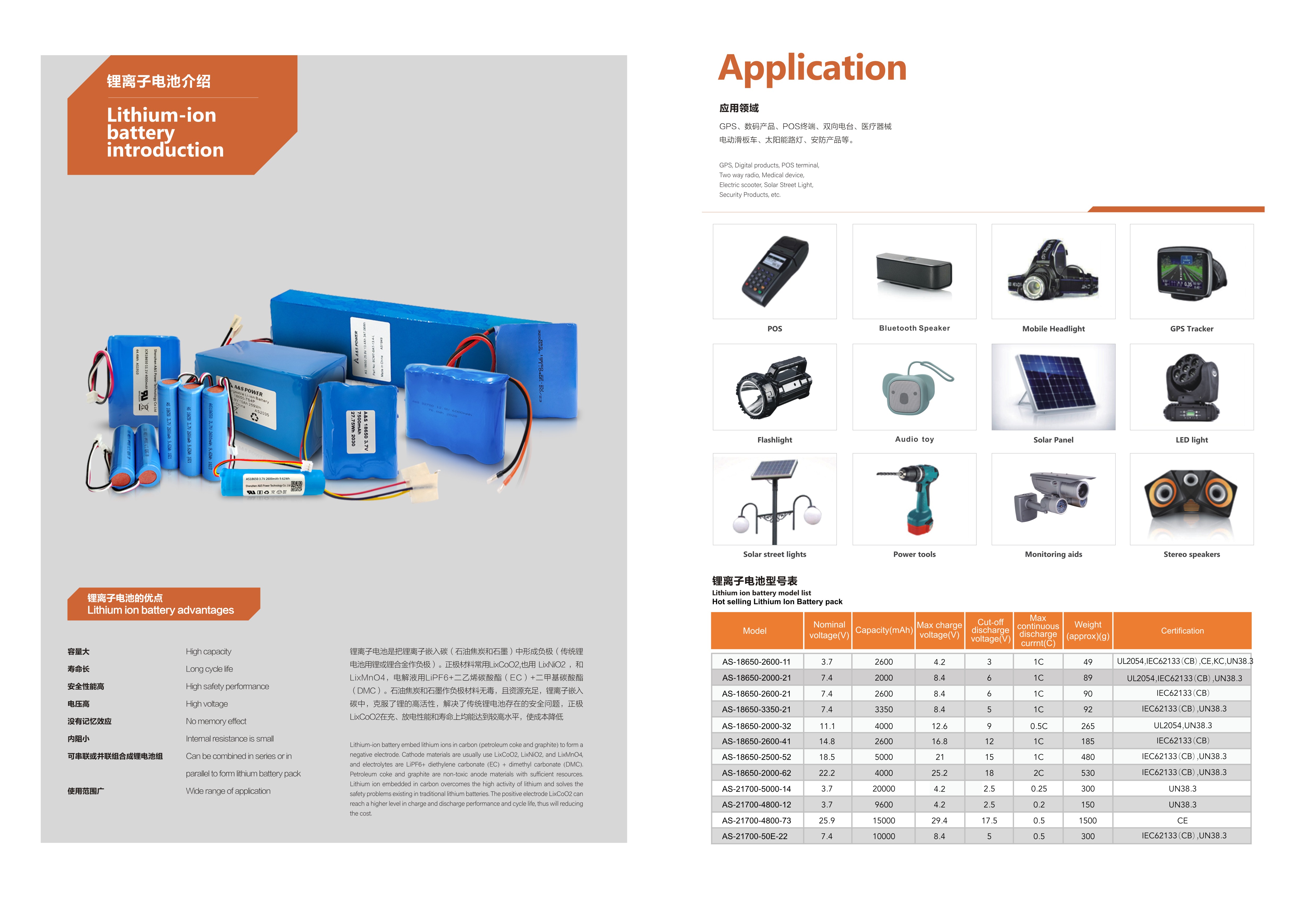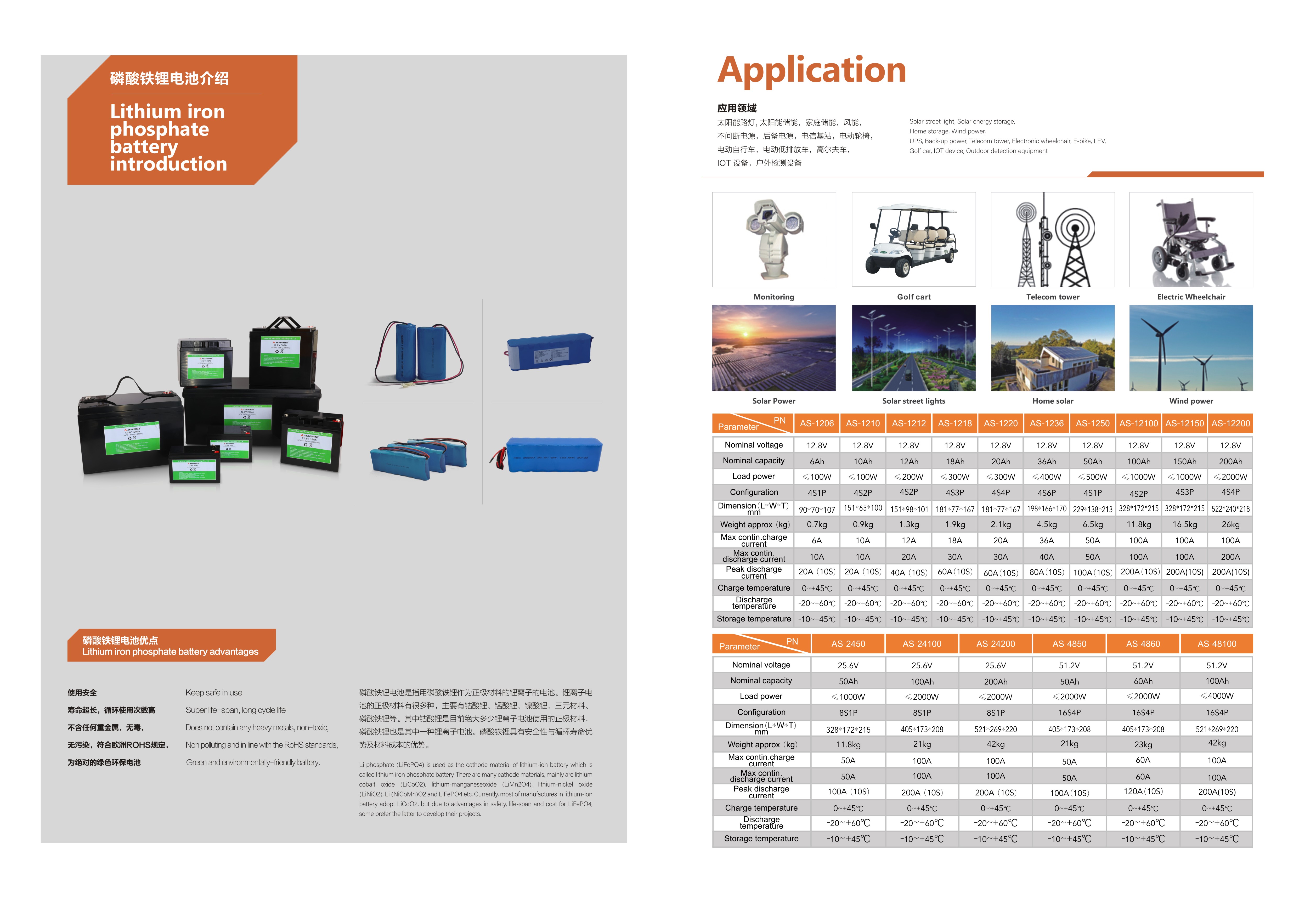Battery
Application
Hot product
Contact us
Lithium Ion Battery And Ternary Lithium Ion Battery Related Knowledge Introduction
2023-08-01
Lithium Ion Battery And Ternary Lithium Ion Battery Related Knowledge Introduction
A Lithium-ion Ternary Battery, also known as a lithium-ion ternary battery, is a lithium-ion battery that uses a ternary anode material. It is one of the most widely used lithium-ion battery types.
Cathode material: The commonly used ternary battery cathode material is formed from a compound of nickel, cobalt and manganese, such as lithium nickel-cobalt manganese oxide (LiNiCoMnO2 or NMC).
Negative material: The negative material is usually graphite, which is used for embedding lithium and releasing lithium ions.
Electrolyte: Electrolyte is the conductive medium between the positive and negative electrodes in the battery, usually composed of organic solvents and lithium salts.
2. Advantages:
High energy density: ternary lithium-ion batteries have a high energy density and can provide relatively high energy storage, thus extending the working time of the battery.
High charge and discharge efficiency: ternary batteries have high charge and discharge efficiency, can provide high output power, and have less loss during cycle use.
Long cycle life: Compared to other lithium-ion batteries, ternary batteries generally have a longer cycle life and can carry out more charge and discharge cycles.
3. Application fields:
Electric vehicles: Ternary lithium-ion batteries are widely used in electric vehicles and can provide reliable and long-lasting drive capacity due to their high energy density and long cycle life.
Mobile devices: Ternary batteries are also widely used in mobile devices such as mobile phones, tablets and laptops, because of their high energy density and small size, so that the device can have a durable and stable battery life.
Energy storage systems: Because ternary batteries have high energy density and long cycle life, they can be used in energy storage systems, such as home energy storage systems, solar and wind energy storage systems.
A Lithium-ion Ternary Battery, also known as a lithium-ion ternary battery, is a lithium-ion battery that uses a ternary anode material. It is one of the most widely used lithium-ion battery types.
Cathode material: The commonly used ternary battery cathode material is formed from a compound of nickel, cobalt and manganese, such as lithium nickel-cobalt manganese oxide (LiNiCoMnO2 or NMC).
Negative material: The negative material is usually graphite, which is used for embedding lithium and releasing lithium ions.
Electrolyte: Electrolyte is the conductive medium between the positive and negative electrodes in the battery, usually composed of organic solvents and lithium salts.
2. Advantages:
High energy density: ternary lithium-ion batteries have a high energy density and can provide relatively high energy storage, thus extending the working time of the battery.
High charge and discharge efficiency: ternary batteries have high charge and discharge efficiency, can provide high output power, and have less loss during cycle use.
Long cycle life: Compared to other lithium-ion batteries, ternary batteries generally have a longer cycle life and can carry out more charge and discharge cycles.
3. Application fields:
Electric vehicles: Ternary lithium-ion batteries are widely used in electric vehicles and can provide reliable and long-lasting drive capacity due to their high energy density and long cycle life.
Mobile devices: Ternary batteries are also widely used in mobile devices such as mobile phones, tablets and laptops, because of their high energy density and small size, so that the device can have a durable and stable battery life.
Energy storage systems: Because ternary batteries have high energy density and long cycle life, they can be used in energy storage systems, such as home energy storage systems, solar and wind energy storage systems.
It should be noted that due to the use of cobalt in ternary lithium-ion batteries, its mining and refining process may bring environmental and social problems. Therefore, when promoting and using ternary lithium-ion batteries, it is necessary to pay attention to the principle of sustainable development, and actively seek ways to recycle and reuse them to reduce the impact on the environment.













